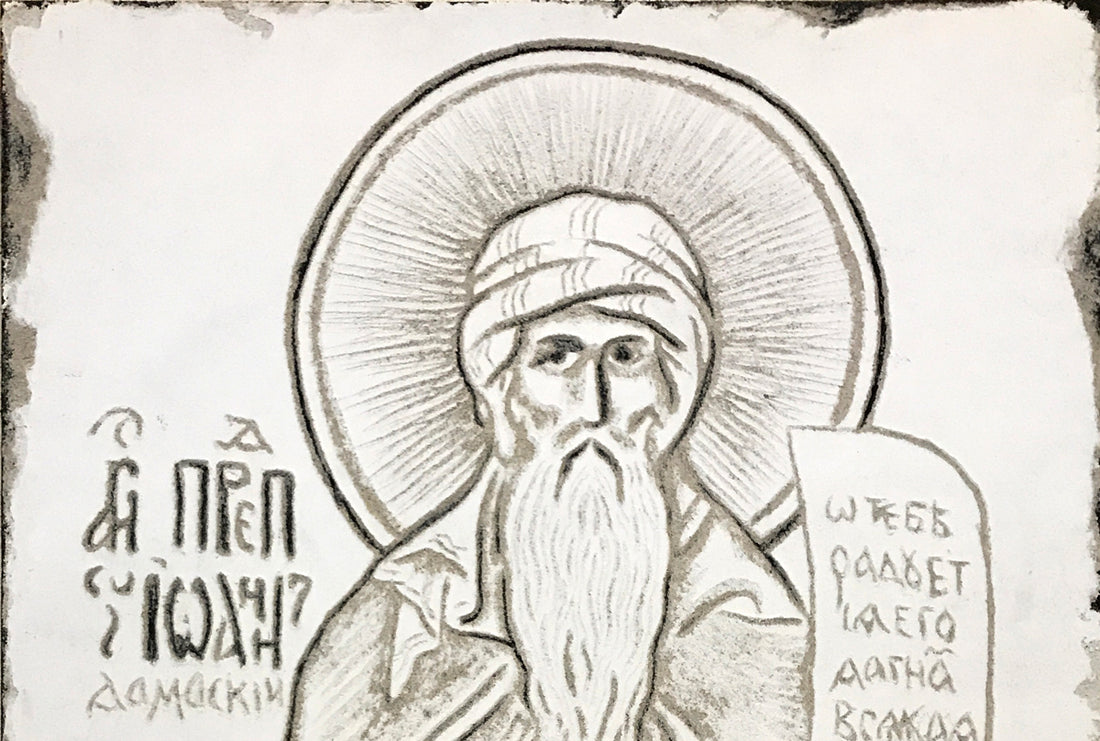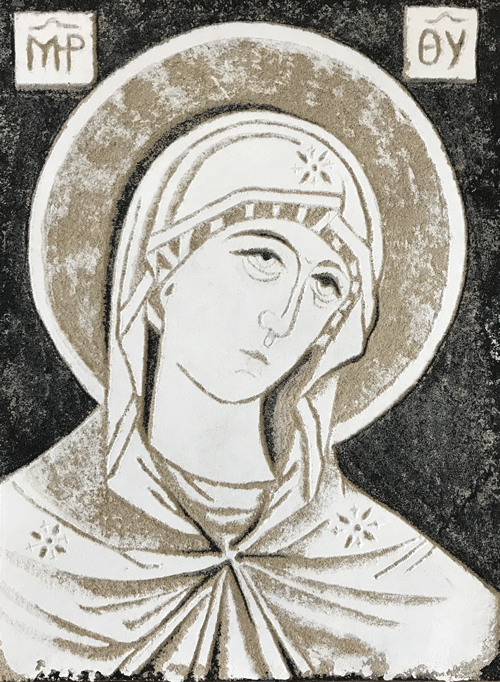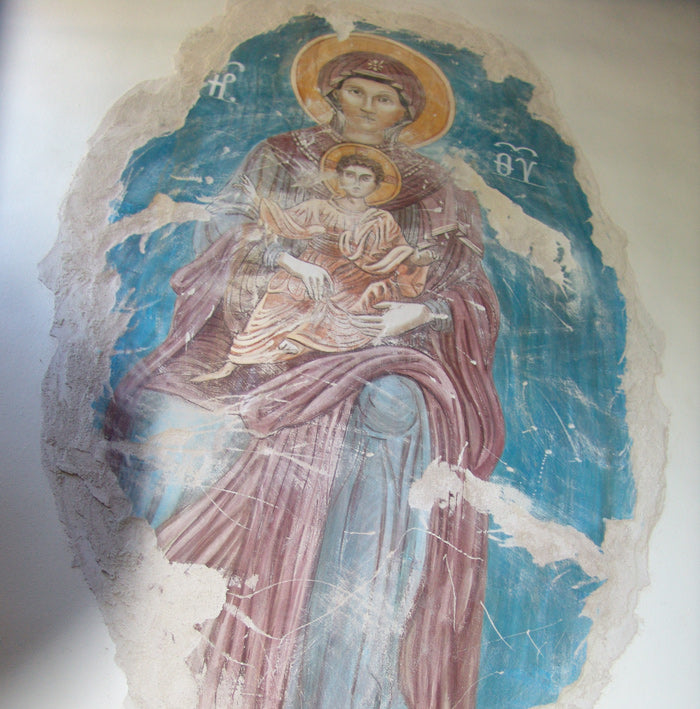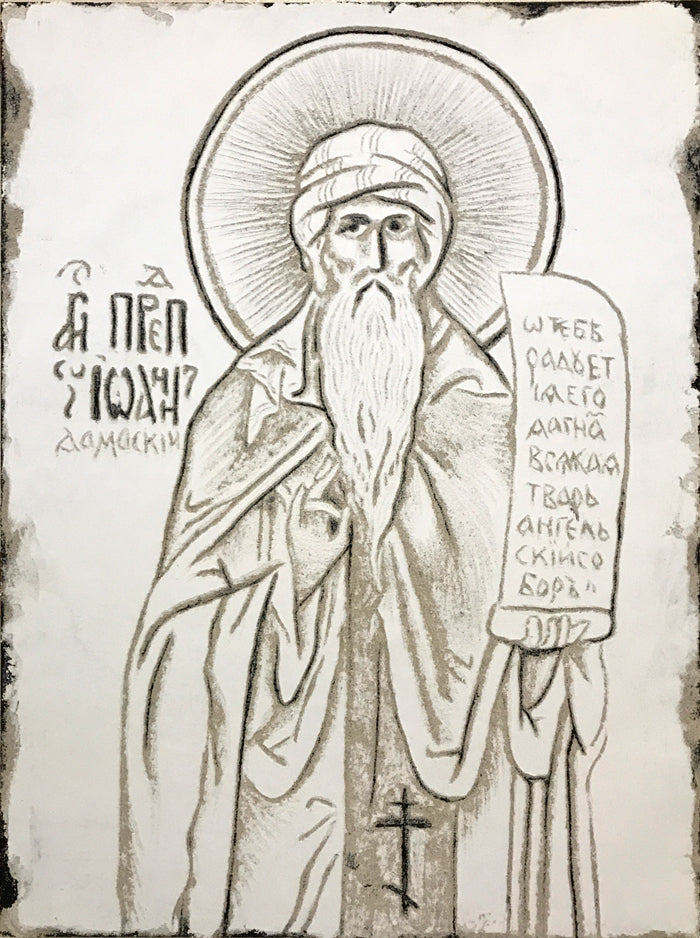“Of old, God the incorporeal and uncircumscribed was never depicted. Now, however, when God is seen clothed in flesh, and conversing with men, I make an image of the God whom I see. I do not worship matter, I worship the God of matter, who became matter for my sake, and deigned to inhabit matter, who worked out my salvation through matter. I will not cease from honoring that matter which works my salvation.”
― John of Damascus, Three Treatises on the Divine Images: Apologia Against Those Who Decry Holy Images
Our venerable and God-bearing Father John of Damascus (c. 676 - December 5, 749) was also known as John Damascene, Chrysorrhoas, "streaming with gold," (i.e., the golden speaker). He was born and raised in Damascus, in all probability at the Monastery of Saint Sabbas (Mar Saba), South East of Jerusalem. His feast day is December 4.
Although he was brought up under the Muslim rule of Damascus, this was not to affect his or his family's Christian faith or cause any grievances with the Muslim countrymen who held him in high esteem. To the extent that his father held a high hereditary public office with duties of chief financial officer for the caliph, Abdul Malekunder, apparently as head of the tax department for Syria.
In spite of his Christian background, his family held a high hereditary public office with the Muslim rulers of Damascus, led by caliph Abd al-Malik. He succeeded his father in his position upon his death; John de Damascene was made protosymbullus, or chief councilor of Damascus.
It was around his term in office that burst of insurgence by the iconoclasts began to appear in the form of heresy, actions which disturbed the Church of the East. In 726, in disregard of the protests of Germanus, Patriarch of Constantinople, Emperor Leo the Isaurian issued his first edict against the veneration of images and their exhibition in public places. A talented writer and in the secure surroundings of the caliph's court, John de Damascene initiated his literary defense against the monarch in three Apologetic Treatises against those Decrying the Holy Images. This was the earliest of his works and the one which earned him a reputation. Not only did he attack the monarch, but his use of a simpler writing style brought the controversy to the common people, inciting revolt among those of Christian faith.
According to the tenth-century biography, his hand was miraculously restored after fervent prayer before an icon of the Virgin Mary. At this point the caliph is said to have been convinced of his innocence and inclined to reinstate him to his former office. However, John then retired to the Monastery of Saint Sabbas near Jerusalem, where he continued to produce a stream of commentaries, hymns and apologetic writings, including the Oktoechos (the Church's service book of eight tones) and An Exact Exposition of the Orthodox Faith, a summary of the dogmatic writings of the Early Church Fathers.
He died in 749 as a revered Father of the Church and is now universally recognized as a saint.
(more at OrthodoxWiki.org)
PRAYER:
Lord,
may the prayers of Saint John Damascene help us,
and may the true faith he taught so well
always be our light and our strength.
Through our Lord Jesus Christ, your Son,
who lives and reigns with you
in the unity with the Holy Spirit,
one God, for ever and ever.
Amen.
Troparion (Tone 8)
Champion of Orthodoxy, teacher of purity and of true worship,
the enlightener of the universe and the adornment of hierarchs:
all-wise father John, your teachings have gleamed with light upon all things.
Intercede before Christ God to save our souls.
Kontakion (Tone 4)
Let us sing praises to John, worthy of great honor,
the composer of hymns, the star and teacher of the Church, the defender of her doctrines:
through the might of the Lord¹s Cross he overcame heretical error
and as a fervent intercessor before God
he entreats that forgiveness of sins may be granted to all.




